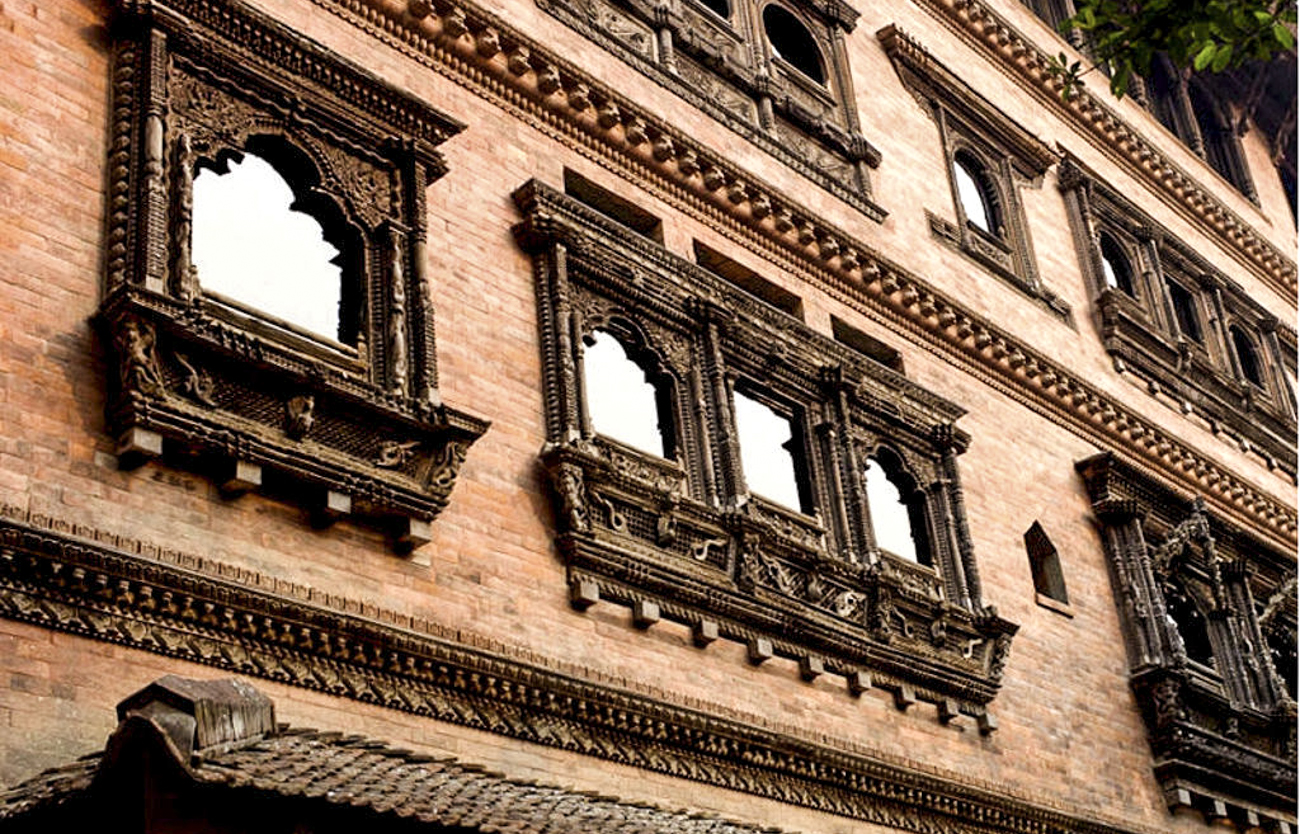
Time out in Nepal | Review: Dwarika’s Hotel, Kathmandu
Kathmandu = chaos. Giselle Whiteaker seeks sanctuary at Dwarika’s Hotel

Kathmandu = chaos. Giselle Whiteaker seeks sanctuary at Dwarika’s Hotel

A day traipsing around central Kathmandu is bound to leave even the most hardcore traveller exhausted – and I’m not that hardcore. The city is a swirl of street life in vibrant colour, matching the textiles piled high on the corners of the pilgrim platforms gracing every other street corner. Dogs without owners lie panting in even the smallest patch of shade, while children without parents chase each other along the muddy, pot-holed streets. Pedal-powered rickshaws are pursued by white taxis which scrape along the narrow alleyways, their Suzuki engines whining with the stop-start motion, and motorbikes blare their horns to clear a path through the hordes of meandering pedestrians who are oblivious to the surrounding cacophony.
Religious icons hide in every nook, stained from the turmeric-painted fingers that stroke the facades in blessing as they pass. Then there are temples. Everywhere. Not peaceful sanctuaries of reflective mediation, but integral parts of the melée, surrounded by vendors praying for commercial success and home to flocks of pigeons that squabble and flutter in the open courtyards.
After eight hours of urban exploration in this jumbled mass of sights and sounds, I needed respite. Tumbling through the door of Dwarika’s Hotel on the edge of the city, my friend and I – red-faced from too much sun and coated with a layer of monsoon dust – felt immediately blanketed by the hushed ambience, as if the door were a portal into Narnia. We soothed our foreheads with cool face-towels while, at tables by the pool, couples murmured discreetly, sipping fruity concoctions.

Dwarika’s Hotel, Kathmandu
Dwarika Das Shrestha, the founder of Dwarika’s Hotel, was an astute man. In the 1950s, and on impulse, he began buying up the wood carvings from the older buildings and temples that were being destroyed to make way for new developments in Kathmandu’s building boom. Some years later, he set up a heritage woodcarving workshop. His combination of original artefacts and modern replicas now lends Dwarika’s Hotel the spirit of an ancient city.
A cluster of buildings has sprung up around the courtyard, all in traditional Newari style. The tall red-brick facades feature intricately carved window-frames and wooden pillars, while stone elephant-spouts gush water into the fountain and pool. Inside, an elevator is subtly tucked into a corner to whisk guests to their rooms. There’s nothing subtle about the enormous padlocks that bolt the doors. It feels like we’re breaking into the vault of a medieval castle.
The 87 tiled-floor rooms are spacious and contemporary, though not incongruously so – apart from the bathrooms. These are open-plan to the point of embarrassment if you’re travelling with a partner who hasn’t seen you naked. If they haven’t yet, they soon will here. The white hand-woven linen, offset with deep red and black, is organically produced. The antique-looking furniture is custom-designed and made by hand. On the coffee table, a set of Bagh-Chal – a traditional strategic board game involving tigers and goats – awaits players. If only the rules were not so baffling.
Dwarika’s Krishnarpan restaurant is an exposé of the culinary history of Nepal, from Himalayan cuisine to Newari to the Thauru fare of the country’s lowlands
It’s not the rooms, though they’re charming enough, that will beckon you here. The real appeal lies in the picture painted of old Nepal. Belying the bustle beyond these walls – and with the hotel’s location just beyond the smoke of the funeral ghats of Pashupatinath Temple, there is bustle aplenty – there’s a serenity here, as if the entire hotel sits beneath a cone of silence. In this living museum, no-one speaks loudly and the only music is that accompanying the dancers who twirl in delight in the courtyard at dusk.

Dwarika’s Hotel, Kathmandu
Dinner here is also a cultural journey. Dwarika’s Krishnarpan restaurant is an exposé of the culinary history of Nepal, from Himalayan cuisine to Newari to the Thauru fare of the country’s lowlands. There’s an entry level six-course menu and an indulgent, and wholly unnecessary, 22-course version. Shoes are removed and hands gently washed by a welcome attendant before guests are led to low tables to start the feast.
Each course is – to many, as they were to me – an unfamiliar adventure, from the introductory Samaya Bajee, a plate of lightly-spiced morsels traditionally served as an appetiser during religious ceremonies, through an assortment of momo (dumplings), sautéed vegetables, bean soup and a selection of curries and dal (lentils), all washed down with a shot of the local firewater – a potent rice wine that sears the throat before warming the belly. A trio of desserts including fresh fruit and semolina pudding completes the repast, leaving guests too full to perform an elegant exit from the floor-level chairs.
Sitting in the courtyard, a breeze whispering past buildings bathed in golden light, it’s easy to see Dwarika’s Hotel as the perfect Nepal. It’s comfortable, culturally refined and the service is impeccable. It’s just the antidote for the chaotic jumble of real Nepal, just beyond its walls. C
Dwarika’s Hotel, Battisputali, Kathmandu 44600, Nepal
+977 1-4479488; dwarikas.com